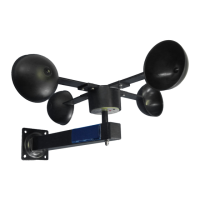Z-Weather
SKU: POPE005206
Quickstart
This is a Sensor for Europe. Please make sure the internal battery is fully charged. Push the button 3 times within 1.5 seconds. If the LED is not blinking
after releasing the button, Z-Weather has not enough energy and must be charged for several hours in bright sunlight.
What is Z-Wave?
Z-Wave is the international wireless protocol for communication in the Smart Home. This device is suited for use in the region mentioned in the Quickstart section.
(For more information about frequency regulations please refer to the frequency coverage overview at Sigma Designs Website ).
Z-Wave ensures a reliable communication by reconfirming every message (two-way communication) and
every mains powered node can act as a repeater for other nodes (meshed network) in case the receiver is
not in direct wireless range of the transmitter.
This device and every other certified Z-Wave device can be used together with any other certified
Z-Wave device regardless of brand and origin as long as both are suited for the same frequency range.
If a device supports secure communication it will communicate with other devices secure as long as this
device provides the same or a higher level of security. Otherwise it will automatically turn into a lower level
of security to maintain backward compatibility.
For more information about Z-Wave technology, devices, white papers etc. please refer to www.z-wave.info.
Product Description
Z-Weather is a cup anemometer for Z-Wave installations. It continually measures the wind speed and can, for example, trigger closing of the awnings and blinds if
it is too windy. It also measures the amount of rotation, enabling calculation of the wind yield per day or per year. In addition, Z-Weather includes sensors for
humidity, temperature, air pressure and dew point, essentially providing the core sensors of a weather station. Z-Weather is powered by a solar cell and stores
energy on an internal capacitor, enabling continuous operation, even with few sun for a couple of days. It does not use any batteries and is completely
maintenance free. Using the built-in solar cell it also measures the ambient light and the solar yield. This information can be used to turn on the outdoor light at
dusk time and turn the light off in the morning. Z-Weather‘s wind yield and solar yield metering can be used as a calculation base for planning a wind generator or
a solar panel on the roof of a house.
During normal operation, Z-Weather is limiting continuous measurement to wind speed and solar radiation, other sensors are operating only on demand. This
conservative energy management ensures continuous operation with the limited energy harvested from the solar cell powering Z-Weather. The Z-Wave radio
frequency transmitter is turned off most of the time and is turned on if there is too much wind, at twilight time and on a continuous base, depending on the energy
budget. The wake up interval is between five minutes at noon in summer and five hours in the second half of the night in winter. Z-Weather also wakes up on
pushing the button.
Prepare for Installation / Reset
Please read the user manual before installing the product.
In order to include (add) a Z-Wave device to a network it must be in factory default state. Please make sure to reset the device into factory default. You can do
this by performing an Exclusion operation as described below in the manual. Every Z-Wave controller is able to perform this operation however it is recommended
to use the primary controller of the previous network to make sure the very device is excluded properly from this network.
Reset to factory default
This device also allows to be reset without any involvement of a Z-Wave controller. This procedure should only be used when the primary controller is inoperable.
Hold the button longer than 1.5 seconds and then release. The LED blinks longer than when pressing the button once.
Installation
Before you can configure and use Z-Weather, the unit needs to be fully charged. In order to charge Z-Weather place it in a location with direct sunlight exposure
for 4-6 hours. Without Z-Weather: Operating elements Function Button and Status LED Solar Cell 3 direct sun light the charging may take up to 12 hours. To check
if Z-Weather has been charged sufficiently, press the button located under the cup anemometer. If the LED blinks after pressing the button, Z-Weather is charged
and operational.
Most of Z-Weather’s sensors are placed inside the top of the ball-bearing cup anemometer and they are measuring the environmental parameters inside the black
round housing. If the sun is shining and Z-Weather is placed in direct sunlight, the housing will warm up and the temperature is higher than the temperature outside
the housing. Thus a place in the shadow is the best choice for placing Z-Weather. Even though Z-Weather is powered by a solar cell, it is not required to place
Z-Weather exposed to direct sun light and there is no need to face it south. The solar cell will produce sufficient energy to power Z-Weather, even if the solar cell is
facing north and the device is in the shadow all day.
Inclusion/Exclusion
On factory default the device does not belong to any Z-Wave network. The device needs to be added to an existing wireless network to communicate with the
devices of this network. This process is called Inclusion.

